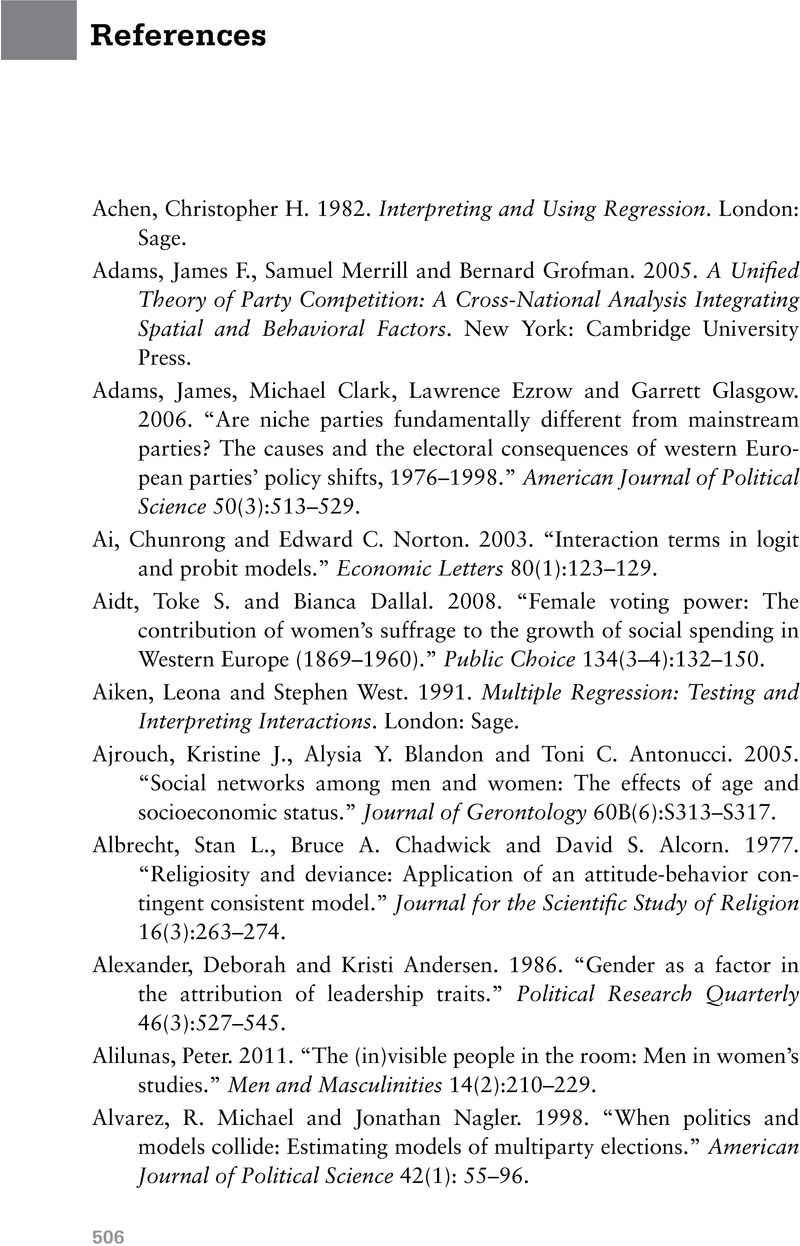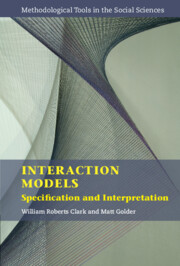Book contents
- Frontmatter
- Dedication
- Contents
- Figures
- Tables
- Preface
- Acknowledgments
- 1 Introduction
- Part I The Fundamentals
- 2 Theories and Their Conditional Implications
- 3 Interaction Model Specification
- 4 Interpreting Quantities of Interest
- 5 Three Substantive Applications
- Part II More Complex Forms of Conditionality
- 6 When We Have More Than One Modifying Variable
- 7 When an Independent Variable Interacts with Itself
- Part III Interactions and Limited Dependent Variables
- 8 Interactions and Dichotomous Dependent Variables
- 9 Interactions and Ordered Dependent Variables
- 10 Interactions and Unordered Dependent Variables
- Appendix A Basic Properties of Variances
- Appendix B Marginal Effects and Variances for Various Linear-Interactive Models
- Appendix C Calculating the Smallest Standard Error for the Marginal Effect of X on Y
- Appendix D Calculating the Values of the Modifying Variable Z at which the Bounds of the Confidence Interval for the Marginal Effect of X Equal 0
- References
- Solutions
- Alphabetical Index
- References
References
Published online by Cambridge University Press: 02 November 2023
- Frontmatter
- Dedication
- Contents
- Figures
- Tables
- Preface
- Acknowledgments
- 1 Introduction
- Part I The Fundamentals
- 2 Theories and Their Conditional Implications
- 3 Interaction Model Specification
- 4 Interpreting Quantities of Interest
- 5 Three Substantive Applications
- Part II More Complex Forms of Conditionality
- 6 When We Have More Than One Modifying Variable
- 7 When an Independent Variable Interacts with Itself
- Part III Interactions and Limited Dependent Variables
- 8 Interactions and Dichotomous Dependent Variables
- 9 Interactions and Ordered Dependent Variables
- 10 Interactions and Unordered Dependent Variables
- Appendix A Basic Properties of Variances
- Appendix B Marginal Effects and Variances for Various Linear-Interactive Models
- Appendix C Calculating the Smallest Standard Error for the Marginal Effect of X on Y
- Appendix D Calculating the Values of the Modifying Variable Z at which the Bounds of the Confidence Interval for the Marginal Effect of X Equal 0
- References
- Solutions
- Alphabetical Index
- References
Summary

Information
- Type
- Chapter
- Information
- Interaction ModelsSpecification and Interpretation, pp. 506 - 523Publisher: Cambridge University PressPrint publication year: 2023
